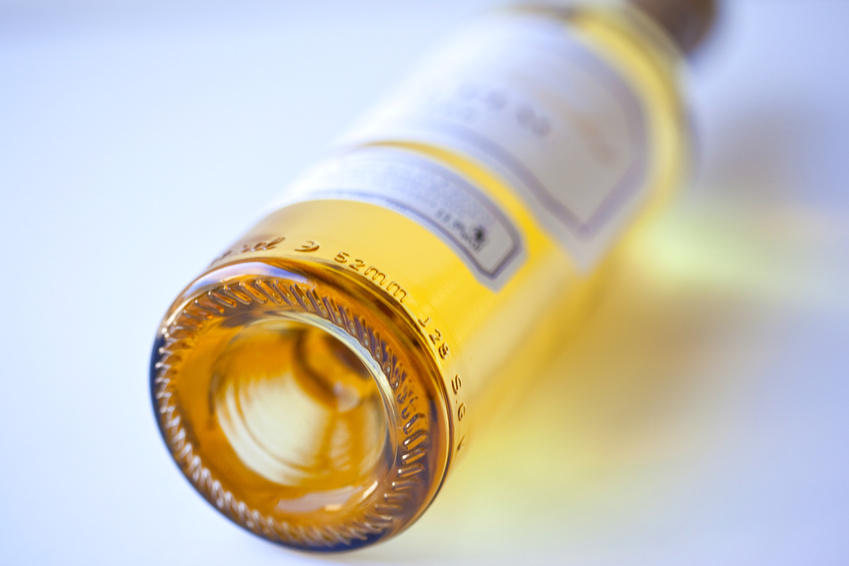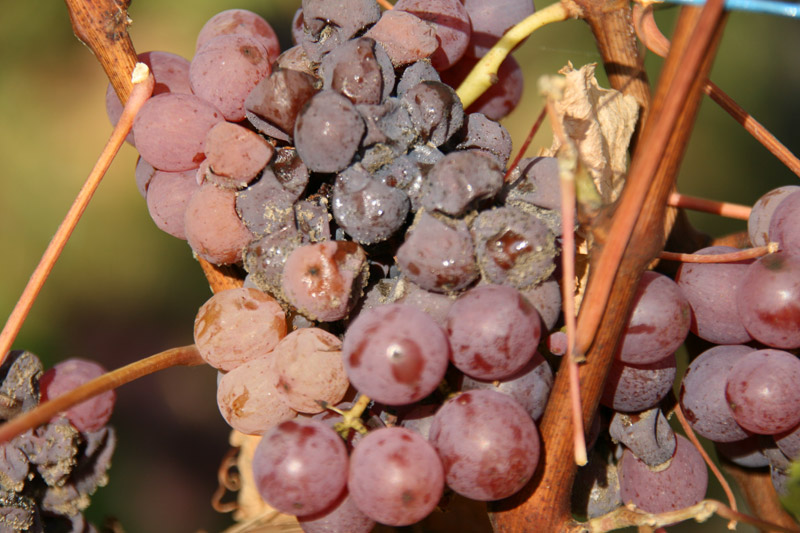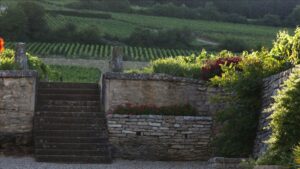
The multitude of terms we read in the world of sweet wine can be perplexing, with varieties described as sweet, dessert, vendanges tardives (late harvest), sélection de grains nobles, and ice wine…but what’s the difference between all of these?
Let’s start with a reminder of what a sweet wine is: if a wine has high levels of sugar, this means that not all of the sugar was transformed into alcohol during fermentation. And if the yeast hasn’t managed to transform all the sugar, this suggests that there was a lot to begin with. So, this kind of wine comes from harvests that are particularly rich in sugar.
What makes a grape higher in sugar?
- Weather conditions that encourage the growth of ‘noble rot’, or botrytis, a microscopic fungus that attacks the plant. This is often seen in the Sauternes region, as well as in the Loire and Alsace.
- A warm, dry wind that causes the fruit to dry out, evaporating the water and increasing the grape’s concentration in sugar and alcohol. In French, this is known as passerillage. It is found in the south-west, especially in the Jurançon, as well as in regions where botrytis usually dominates; in these cases, the two can be combined for some vintages. Passerillage is also encouraged for certain red wines like Amarone.
- Another form of passerillage is carried out by vintners themselves: the bunches are cut from the vines and left to dry in a hot, ventilated place, usually on straw. Hence the name ‘straw wine’, which is given to kinds made in the northern Rhône at Tain-l’Hermitage and in the Jura.
- Ice wine is made when cold and frosty conditions bring a strong concentration of sugar to the grapes. These can be found in Alsace, though the method is more common outside of France, in countries such as Germany, Austria, and Canada.

How are sweet wines vinified?
To begin with, vinifying a sweet wine doesn’t pose any particular problems. They start by fermenting, either with the help of added yeasts, or simply the wild yeasts present in the grapes and the winery. The difference comes when fermentation slows right down, and the sugar no longer turns into alcohol. More or less residual sugar remains, and to stop this from fermenting once bottled, sulphur is added in quantities much larger than in a dry wine; this blocks any further fermentation.
Classifying sweet wines into their different categories, then, isn’t about the reason for their high levels of sugar (eg botrytis, passerillage), but rather the amount of residual sugar they hold. Though it is true that wines made through passerillage tend to have lower levels of sugar than those that come from botrytis.
How are sweet wines classified?
The category assigned to a particular wine corresponds to the grams of residual sugar (not transformed into alcohol) that it contains.
- Dry, when it contains maximum 4g sugar per litre
- Medium dry (demi-sec) when it contains between 4g/l and 12g/l
- Sweet (moelleux) when it contains over 12g/l and a maximum of 45g/l
- Dessert wine (liquoreux) when it contains over 45g residual sugar per litre
In reality, most fine dessert wines contain over 100g sugar per litre, and some as much as 200g/l! However, the tasting profile of a sweet wine isn’t determined solely by its sugar levels. For example, a wine with strong acidity will compensate for sweetness, so a cuvée with 100g sugar per litre but a good acidic kick won’t be as cloying as it may sound. It might appear almost ‘light’, compared to a heavier wine with less of an acidic side.
What are ‘vendanges tardives’ and ‘sélection de grains nobles’?
If the label on a wine mentions ‘vendanges tardives’ or ‘sélection de grains nobles’, this doesn’t refer to the amount of sugar it contains, but rather to the method and criteria used to make it. In the Alsace region, these terms have especially strict definitions. Here, ‘Vendanges Tardives’ refers to grapes with a minimum potential alcohol percentage of 14.4%. They must also be harvested by hand, refer to a single, declared varietal, clearly state their vintage, and fit within the set criteria of permitted grapes: Gewurztraminer, Muscat, Pinot Gris, and Riesling. The Riesling and Muscat grapes must have a minimum, natural sugar potential of 200g/l, and it is 243g/l for the Pinot Gris and Gewurztraminer. “Vendanges Tardives” wines cannot be enriched in any way either, such as with chaptalisation (when sugar is added to the grape juice). Such methods are sometimes used in Sauternes wines.
Still in Alsace, “Sélection de Grains Nobles” wine is made by a process of successively sorting grapes with noble rot. This renders the identity of the varietal more discreet, whilst creating a wine that has great power, complexity, and persistence on the palate. To be given this title, the same conditions are required as for the Vendanges Tardives: manual harvest, single varietal, clear vintage, and no enhancement processes. Sugar levels are slightly higher, too, at 256g/l for the Riesling and Muscat, and 279g/l for the Pinot Gris and Gewurztraminer.
These two labels don’t exist only in Alsace! SGN wines (ie. those using botrytised grapes) can be found, for example, in the Loire appellations of Coteaux du Layon and Coteaux de l’Aubance; here, they also must fit a strict set of criteria. The second – Vendanges Tardives – is often found in appellations where white grapes are harvested over-ripe (not botrytised). In this case, they don’t have to reach a minimum level of residual sugar. This is similar to the ‘Vieilles Vignes’ label which doesn’t have an official minimum age.
Always important to mention are the food pairings you might like to invent with this kind of wine! As you can tell, a ‘sweet’ wine doesn’t refer to only one thing, so the possibilities are vast and varied. The most important thing to consider is the overall profile of the wine, particularly in terms of its acidity. This is the key to a successful pairing, rather than looking simply at the sugar level on its own. A little bit of research into the wine is all you need before serving, and you’re sure to create something magical with the addition of this veritable liquid gold.




